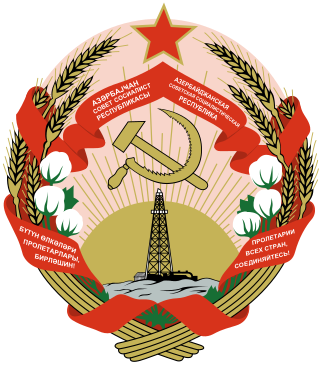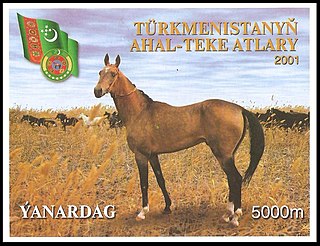
The history of Turkmenistan traditionally began with the arrival of Indo-European Iranian tribes around 2000 BC. Early tribes were nomadic or semi-nomadic due to the arid conditions of the region, preventing widespread adoption of agriculture. The steppe culture in Central Asia was an extension of a larger Eurasian series of horse cultures which spanned the entire spectrum of language families, including the Indo-Europeans and Turko-Mongol groups. Some of the known early Iranian tribes included the Massagatae, the Scythians/Sakas, and early Soghdians, who were most likely precursors of the Khwarezmians. Turkmenistan was a passing point for numerous migrations and invasions by tribes, which gravitated towards the settled regions of the south, including ancient Mesopotamia, Elam, and the Indus Valley civilization.

The politics of Turkmenistan nominally takes place in the framework of a presidential republic, whereby the President of Turkmenistan is nominally both head of state and head of government. However, as of 21 January 2023 a "national leader" was appointed who chairs an independent People's Council (viz.) with authority to amend the constitution, and who exercises supreme political authority. No true opposition parties are allowed; every registered political party supports the third and current President Serdar Berdimuhamedow. The country is frequently described as a totalitarian state.

Ashgabat is the capital and the largest city of Turkmenistan. It lies between the Karakum Desert and the Kopetdag mountain range in Central Asia, approximately 50 km away from the Iran-Turkmenistan border. The city has a population of 1,030,063.

Turkmenistan is a country in Central Asia bordered by Kazakhstan to the northwest, Uzbekistan to the north, east and northeast, Afghanistan to the southeast, Iran to the south and southwest and the Caspian Sea to the west. Ashgabat is the capital and largest city. It is one of the six independent Turkic states. With a population over 7 million, Turkmenistan is the 35th most-populous country in Asia and has the lowest population of the Central Asian republics while being one of the most sparsely populated nations on the Asian continent.

The flag of Turkmenistan features a white crescent and five stars representing the five regions of the country and the Five Pillars of Islam. Placed upon a green field is a symbolic representation of the country's famous carpet industry. It was introduced as the flag of Turkmenistan on 27 September 1992 to replace the Soviet-era flag which consisted of a red background with two light blue bars in the middle. The modified version with a 2:3 ratio was adopted on 23 January 2001. State Flag and Constitution Day is celebrated on 18 May.

Turkmens are a Turkic ethnic group native to Central Asia, living mainly in Turkmenistan, northern and northeastern regions of Iran and north-western Afghanistan. Sizeable groups of Turkmens are found also in Uzbekistan, Kazakhstan, and the North Caucasus. They speak the Turkmen language, which is classified as a part of the Eastern Oghuz branch of the Turkic languages.

Saparmurat Turkmenbashy Olympic Stadium was a multi-purpose stadium in Ashgabat, Turkmenistan, that stood on the site now occupied by the new Olympic Stadium, built between 2013 and 2017.

The emblem of the Azerbaijan Soviet Socialist Republic was adopted in 1937 by the government of the Azerbaijan Soviet Socialist Republic. The style is based on the emblem of the Soviet Union.

The Emblem of the Turkmen Soviet Socialist Republic was adopted on 2 March 1937 by the government of the Turkmen Soviet Socialist Republic. The coat of arms is based on the coat of arms of the Soviet Union. It shows symbols of agriculture and heavy industry, as well as a symbol of the Turkmen people, a rug. The rising Sun stands for the future of the Turkmen nation, the red star as well as the hammer and sickle for the victory of Communism and the "world-wide socialist community of states".

Saparmurat Atayevich Niyazov, also known as Türkmenbaşy, was a Turkmen politician who led Turkmenistan from 1985 until his death in 2006. He was the first secretary of the Communist Party of Turkmenistan from 1985 until 1991 and supported the 1991 Soviet coup attempt. He continued to rule Turkmenistan as president for 15 years after independence from the Soviet Union in 1991.

The national symbols of Turkmenistan are defined in Article 14 of the Constitution of Turkmenistan. They consist of the Flag, the Coat of Arms, and the National Anthem. Online copies of them are available on the website of the Assembly of Turkmenistan, or Mejlis.

A Turkmen rug is a type of handmade floor-covering textile traditionally originating in Central Asia. It is useful to distinguish between the original Turkmen tribal rugs and the rugs produced in large numbers for export mainly in Pakistan and Iran today. The original Turkmen rugs were produced by the Turkmen tribes who are the main ethnic group in Turkmenistan and are also found in Afghanistan and Iran. They are used for various purposes, including tent rugs, door hangings and bags of various sizes.

Yanardag is an Akhal-Teke stallion owned by the former President of Turkmenistan, Saparmurat Niyazov. The stallion is depicted on the coat of arms of Turkmenistan, on a 2001 miniature sheet Turkmenistan postage stamp, and in other Turkmen national representations, and he is also often featured in newspaper and magazine articles.

The Central Bank of Turkmenistan is the national bank of Turkmenistan. It is located in the centre of Ashgabat. It was established in 1991 and regulates the country's banking system and supervises the national financial policy.

The list of Turkmenistan-related articles is below

The Turkmen Ground Forces is the army branch of the Armed Forces of Turkmenistan. The ground forces include the 2nd, 3rd, 11th, and 22nd Motor Rifle Divisions as well as smaller units consisting of various types of troops.
Teke is a major and politically influential tribe of Turkmens in Turkmenistan.

The Independent Honor Guard Battalion of the Ministry of Defence of Turkmenistan is the official ceremonial unit of the Armed Forces of Turkmenistan that serves as a guard of honour unit. The battalion guards the Independence Monument, the National Museum of Turkmenistan and the Presidential Palace in Ashgabat. The battalion was formed in 1992 as one of the first purely ceremonial units of the Turkmen Armed Forces. The battalion is composed of two infantry companies and also maintains a cavalry company. The Turkmen Internal Troops, Turkmen Border Troops, and Turkmen National Guard are separate from the battalion.
Magtymguly Avenue, transliterated from Russian as Makhtumkuli, is an avenue in Ashgabat, Turkmenistan. It is considered to be the longest and most prominent avenue in the capital
Major General Akmurad Nazarovich Kabulov is a Turkmen general and politician.


















